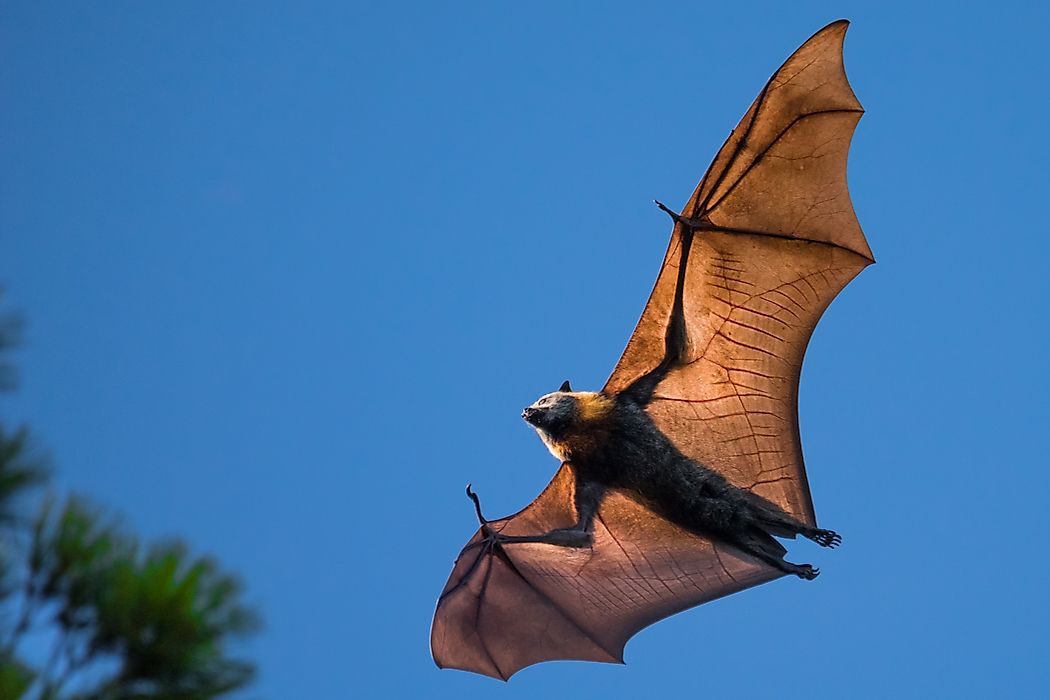Flying Foxes: The Largest Bats in the World

The flying fox (Pteropus vampyrus) is the largest bat species in the world. They are identified by their faces, which resemble a fox, long wings, large strong claws, and unique behavior. These bats have a distinctive body odor that allows them to communicate with each other during the mating season. Their contrasting colors help them mingle with the environment and allows them to camouflage themselves with branches and dry leaves.
Reproduction
Flying foxes are mammals and thus give birth and take care of their young ones. The bats have two breeding seasons, during spring and fall, in which the female can get pregnant in either season. Female bats reach sexual maturity at the age of two and give birth to one pup at a time. In spring, the pregnant females form a maternal colony where they give birth after 40 days and take care of their pups for two to three months until their wings are fully developed and they are able to fend for themselves.
Behavior
The enormous bats are mainly nocturnal with the capability of traveling over twenty-five miles in one night seeking forage. These mammals spend a considerable amount of their time on personal grooming and care. They use their large wings to scoop water from ponds and large water bodies and spread the water all over their bodies. Due to the lavishness of fruits in their habitats, flying foxes form large colonies comprising of 100,000 individuals and sometimes colonize with the Malaysian Flying foxes. Colonizing in large numbers helps the bats remain warm and escape predators. However, this makes it easy for humans to pursue the bats. Their large colonies play a crucial role in the ecosystem since they aid in dispersing seeds in the rain forests.
Habitat and Range
The flying foxes are mostly found in the tropical rain forests of the Philippines and East Asia. Its range extends from Southern Myanmar, Vietnam, Thailand, and through the Malaysian Peninsular to Singapore and Indonesia. The majority of the bats inhabit the coastal regions but some go to high altitudes with elevations ranging all the way from the sea level to 3,600 feet above sea level. They inhabit tropical and mangrove rain forests and seek shelter on tall leafless trees and deep caves.
Diet
Flying foxes are frugivorous and mainly feed on fruits that typically grow in the rain forests. Figs, lamio, and papaya are their favorite fruits. Flying foxes feed at night and use their sight to find their way through the dark. Besides fruits, the bats feed on nectar from coconut and durian trees, their long tongues and sticky saliva allow them to suck nectar without destroying the flowers.
Physical description
The flying foxes bats are considered the largest bat species in the world. They have a layer of fur on the head that is brownish black in color, reddish-brown fur on their back and an orange cap with orange-yellow patterns around their neck. They have exceptionally large wings measuring up to five feet when fully displayed and weigh 2.5 pounds. Unlike other fruit bats, the flying foxes do not have a tail and their ears are pointed making them a unique breed. Their face resembles that of a fox but have no DNA relation with the fox, and their long stunts look similar to that of canines.











